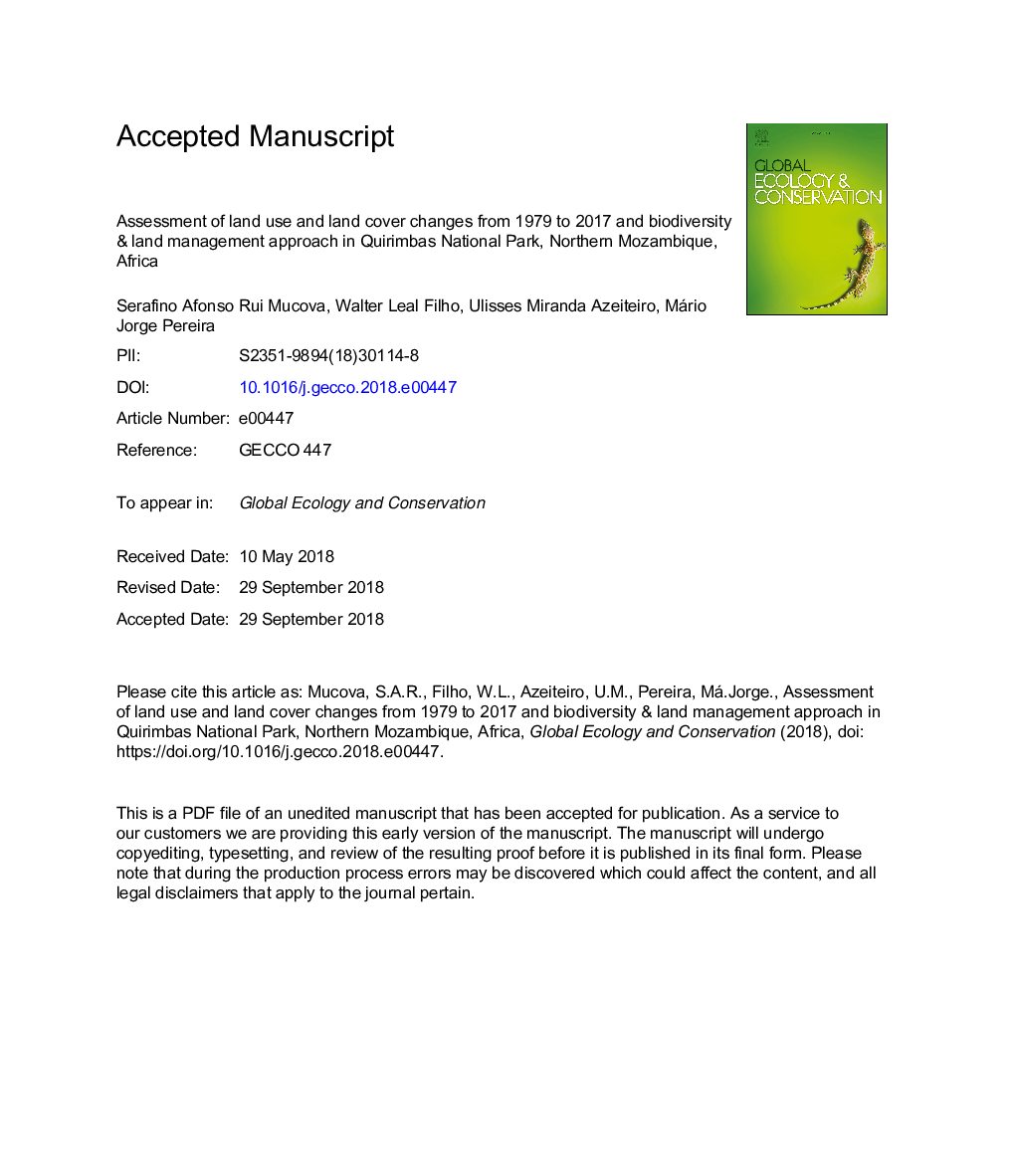| Article ID | Journal | Published Year | Pages | File Type |
|---|---|---|---|---|
| 11008236 | Global Ecology and Conservation | 2018 | 24 Pages |
Abstract
National parks are established with the aim of guaranteeing and protecting natural biodiversity and ecosystems, in a multi-level and integrated approach. Biodiversity conservation, management of protected areas and sustainable development with strategies targeting rural populations are current challenges in Africa, in the context of exponential human population growth, overexploitation of natural resources, forest destruction and climate change. The Quirimbas National Park (QNP) has been suffering from severe and constant threats originating from different sources and changes in land use and land cover. These changes, and in the context of global climate change, pose permanent challenges to the managers of this conservation area of Mozambique. The research aimed to analyze the historical and recent LULC over the last 38 years, to provide consistent and scientific information for decision making on biodiversity conservation approaches; to identify the main changes and their impacts on the ecosystem to implement/develop appropriate mitigation strategies. A combined and integrated methodological approach has been developed from satellite imagery analyzes of Landsat 2 and 5 MSS (Multispectral Scanner); Landsat 5â¯TM (Thematic Mapper), Landsat 8 OLI (Operational Land Imager), and fieldwork (field observation and communities and QNP staff meetings). The results show that the overall map classification obtained was between very good and excellent: 1979 - Kappa 71.84%, Overall Accuracy 86.55%; 1989 - Kappa 83.49%, Overall Accuracy 93.01%; 1999 - Kappa 85.03%, Overall Accuracy 90.07%; 2009 - Kappa 79.57%, Overall Accuracy 86.42%; 2017 - Kappa 80.24%, Overall Accuracy 86.95%. For 38 years, the QNP lost about 301,761.7ha, corresponding to 41.67% of the total QNP coverage land. The main causes are associated with intensive agriculture, human settlements, population growth, illegal exploitation of forest resources and miners inside of the Quirimbas National Park. The impact extends from territory reduction and fragmentation to vegetation and animal biodiversity loss, human-wildlife conflicts, habitat connectivity loss, species isolation and scaring, and basic resources scarcity for the community's livelihoods.
Keywords
Related Topics
Life Sciences
Agricultural and Biological Sciences
Ecology, Evolution, Behavior and Systematics
Authors
Serafino Afonso Rui Mucova, Walter Leal Filho, Ulisses Miranda Azeiteiro, Mário Jorge Pereira,
